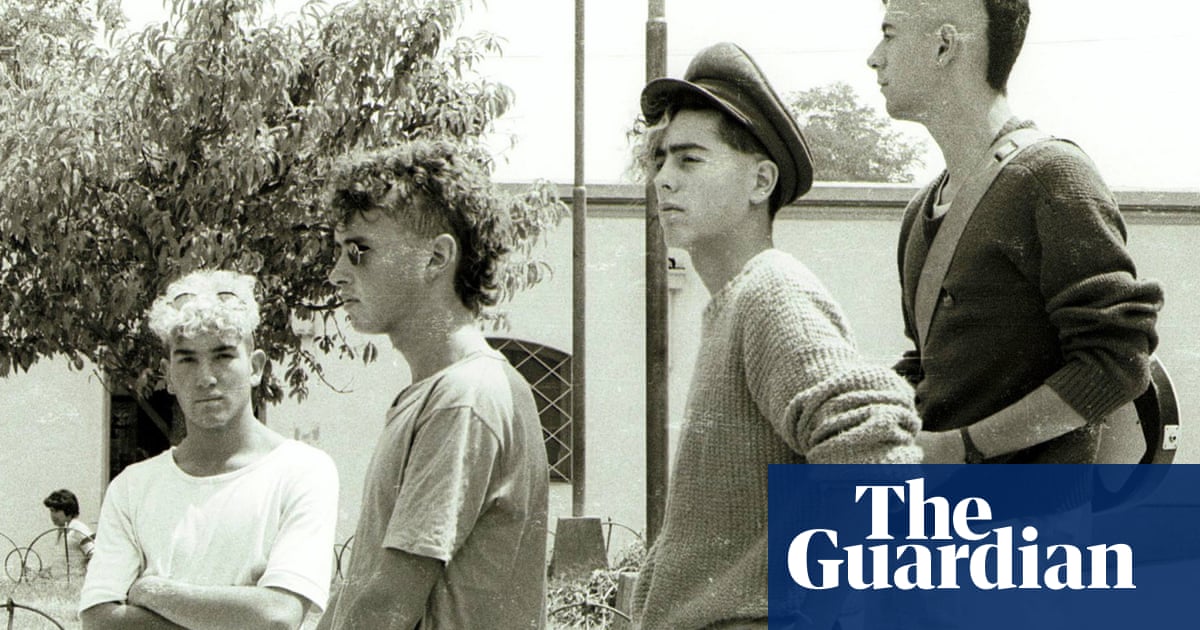
“I saw the best minds of my generation destroyed by madness, starving hysterical naked …”
So begins Allen Ginsberg’s radical poem Howl, which upon close study has absolutely nothing to do with werewolves. And yet it appears on a reporter’s desk in Joe Dante’s horror classic The Howling, one among many blink-or-you’ll-miss it visual jokes that Dante tucks into the movie, like a small-town sheriff scarfing down a can of Wolf-brand chili or an old Little Boy Blue cartoon featuring the Big Bad Wolf that’s airing on TV. His best films are loaded with such peripheral delights, which have the feel of inside jokes, but mostly point to the movie-crazy spirit of a Dante production. The more movies you’ve seen, the more you tend to love Joe Dante.
On the other hand, maybe Ginsberg does have some insight into werewolves. Howl isn’t going to help this reporter unlock the mysteries of The Colony, a forest retreat that appears to be populated by creatures of the night, but this is a poem about aberrant sexuality, the rejection of repressive societal norms and the implicit desire for communities that exist outside the mainstream. Then again, these are actual monsters, people who might imagine themselves to be expressing the primitive desires at the heart of mankind, but are only serving their own appetites. They’re fake radicals. Ginsberg would not approve.
Now celebrating its 40th anniversary – a period that has accommodated two additional Gary Brandner novels and eight sequels (and counting) – The Howling kicked off an era where horror films started modernizing the classics with gory practical effects and explicit sexuality. It would be followed that decade by films like An American Werewolf in London, Cat People, The Lost Boys and Near Dark, which were all about unleashing the violence and lust that old Universal monster movies or Val Lewton productions could only suggest. As Dr George Waggner (Patrick Macnee), the author and intellect who runs The Colony, says to a TV audience, “We should never try to deny the beast within us.” In the 80s, Dante did his part to unleash the beast.
For Dante, The Howling was the next step in a genre evolution that grew out of his work for Roger Corman, who produced his brilliant shoestring spoof Hollywood Boulevard in 1976 and then commissioned him for the first-rate Jaws rip-off Piranha, which he made with then screenwriter John Sayles. Moving one small rung up the budgetary ladder, Dante again turned to Sayles to overhaul an existing screenplay for The Howling and rewarded him with a plum cameo as a coroner who’s dumbfounded about a missing corpse. Once again, the sweet spot for Dante and Sayles is an unusually witty, knowing horror film that still delivers the requisite shocks. But with this film, they have a little more to say about the cost of indulging your animal nature and the ways in which evil chooses to present itself.
It also gets some good satirical licks in on television news, which sensationalizes violence whenever possible. Only one year off from ET the Extra-Terrestrial, Dee Wallace stars as Karen White, a TV anchorwoman who’s become the target of a serial killer who calls himself “Eddie Quist”. A shady sting operation leads to Eddie’s capture in porn-shop peep show, but the experience proves so traumatic to Karen that she suffers amnesia, breaks down on the air and only seems to remember what happened in her nightmares. That avuncular TV therapist Dr Waggner suggests that Karen and her husband (Christopher Stone) recuperate at The Colony, but this peaceful retreat seems spooky from the get-go, and the visitors start to feel like targets.
A late reference to Guyana on the news connects The Colony to the Jonestown settlement, where two years earlier, the cult leader Jim Jones fatally poisoned more than 900 of his followers with cyanide. (Reminder: avoid casual use of the term “drinking the Kool-Aid”.) Dante and Sayles, working loosely from Brandner’s novel, present The Colony as the same fake communal paradise, removed from the repressive influence of modern society, but rife with predatory behavior – much of it sexual and ultimately lethal, just like Jonestown. It might sound natural and liberating for people to listen to their animal nature, but The Howling is about where that philosophy inevitably leads.
The Howling also introduces a fascinating point of contention within the camp between those, like Dr Waggner, who want to live normally, eating meat other than human flesh, and those who want to satisfy their appetites however they wish. They are all the same type of monster at heart – and will do anything to stop Karen and her fellow reporters from exposing their operation – but the film is a lesson in how some succeed in veiling their bad intentions more effectively than others. Just because Dr Waggner doesn’t transform into a snarling beast on live television doesn’t make him any less of a threat than the mysterious Eddie Quist. Like many of the classic Universal monsters, they have two faces.
As much as politics has always been embedded in Dante’s work – see also: Matinee, Small Soldiers, the Homecoming episode of Masters of Horror – The Howling is rightly remembered as a model of low-budget horror, turning the forest setting into a Grimm storybook of dense canopies and creepy cottages, and giving effects artist Rob Bottin a generous allotment to work his magic. The wolves in The Howling, like the parasitic lifeforms Bottin created for The Thing the following year, are soft, stretchy, pulsating mounds of flesh. Their visceral transformation is not only icky and scary, but makes it impossible to forget that they’re human, too. They’ve succumbed to their worst instincts.
What remains surprising about The Howling is how lightly it carries itself, despite its evocation of evil cults and the ever-present threat of rape and murder at The Colony. That’s the Dante touch: he’s an entertainer and a cinephile, inclined to tuck in references to old movies (many characters are named after horror directors), give bit parts to favorites like Kevin McCarthy and Slim Pickens, and, of course, save a role for his friend Dick Miller as an occult bookstore owner. (“The Manson family used to hang around and shoplift,” he says. “Bunch of deadbeats.”) The Howling was a chance for Dante to muck around in a genre he loves, and damned if he wasn’t going to have a good time doing it.












